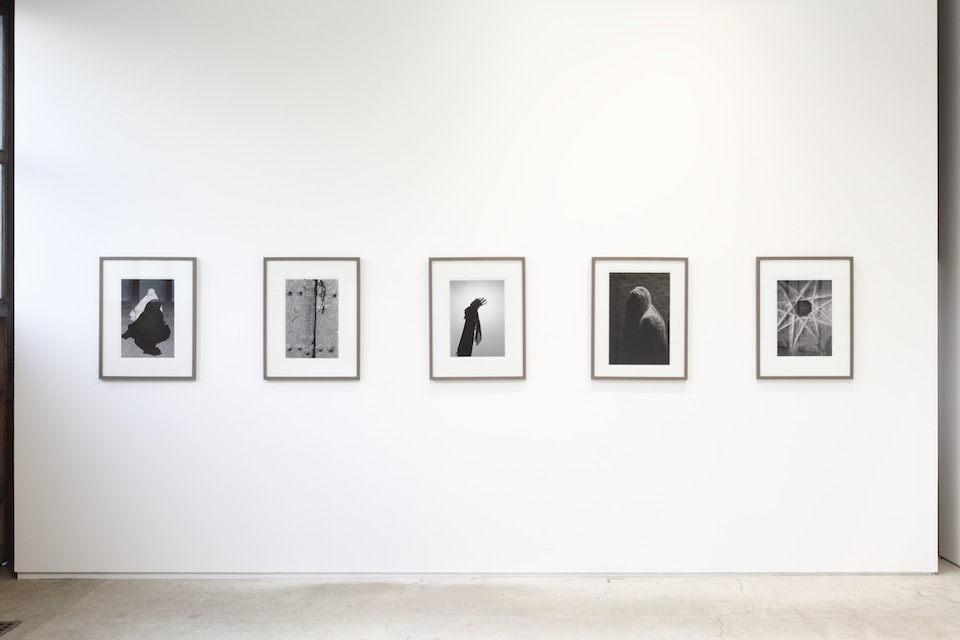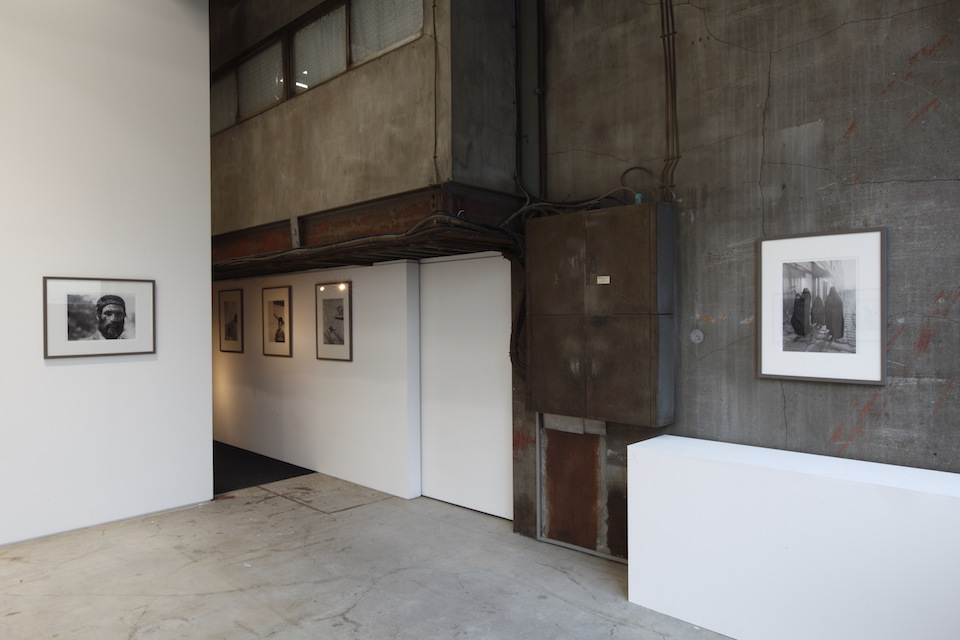
Tomatsu Shomei Afghanistan 1963 2013
Installation view at MISA SHIN GALLERY
Photo: Keizo Kioku

Tomatsu Shomei Afghanistan 1963 2013
Installation view at MISA SHIN GALLERY
Photo: Keizo Kioku
Tomatsu Shomei 東松 照明
Afghanistan 1963 アフガニスタン1963
Date:Thursday, September 19 – Saturday, November 2, 2013
PRESS RELEASE
Download Press release (English)
Download Press release (日本語)
<日本語は英語の後に続きます>
One of Japan’s best known photographers, Tomatsu Shomei (1930-2012) focused his keen eye on themes with social impact in post-war Japan, including U.S. military bases, Nagasaki, and Okinawa. This exhibition comprises fourteen monochrome prints, digital prints of photographs taken by Tomatsu in 1963 while traveling in Afghanistan.
In August 1963, Tomatsu visited Afghanistan as a correspondent of the magazine Taiyo, published by Heibonsha. Both his first trip abroad as well as his first trip to Afghanistan, for the thirty-two year old Tomatsu, the experience was a series of surprises?the white parched landscape and intense sunlight, the lifestyles of the nomads who had no permanent homes, the people who gathered at the bazaars, and the women wearing the chadri (burqa).
The two hundred odd photos taken on this journey show the lifestyles and culture of the people before Afghanistan was drawn into war. Tomatsu self-published his work in 1968 as As-Salamu Alaykum (Peace Be With You). This was later published by Asahi Sonorama in 1978 as Kingdom of Mud.
Rather than adopt a curious or romantic perspective towards an exotic culture, the young Tomatsu’s photos represent cutouts from the lives of Afghan people living under harsh natural conditions. His attempt to get at the true nature of the subject by placing himself in the subject’s position can be seen as the very essence of a photographer’s work. This is a perspective that appears consistently in his later photographs of Shinjuku, Okinawa, and Southeast Asia, and similarly posed poignant questions for contemporary society.
In the foreword to Kingdom of Mud, Tanikawa Koichi comments, “These pictures of Afghanistan already display signs of the critique of civilization that became such a conviction for Tomatsu in his key series of works published under the title Pencil of the Sun in 1975 namely, a conscious approach or methodology of using a remote frontier to throw light on the civilized Japanese society of the post-war years.”
Even after half a century, these photos taken in Afghanistan still strike us as works of amazing originality. This exhibition is a precious opportunity to explore the origins of the coherent thread that runs through Tomatsu’s life as a photographer.
Tomatsu Shomei
(1930-2012) Tomatsu was studying economics at Aichi University when he started taking photographs. After working at Iwanami Shashin Bunko (Iwanami Photograph Publicity), he began working as a freelance photographer in the 1950s. Recent major exhibitions include “Shomei Tomatsu: Skin of the Nation” at the San Francisco Museum of Modern Art (San Francisco, 2004), “Tokyo Mandala” at the Tokyo Metropolitan Museum of Photography (Tokyo, 2007), “The Chiseling of Time” at the Nagasaki Prefectural Art Museum (Nagasaki, Japan, 2010), “Tomatsu Shomei: Photographer” at the Nagoya City Art Museum (Nagoya, 2011), and “Shomei Tomatsu: Island Life” at the Art Institute of Chicago (Chicago, 2013).
東松照明(1930年–2012年)は、米軍基地や、長崎、沖縄など社会的な対象をテーマとし、戦後の日本を見つめ続けた日本を代表する写真家の一人です。本展覧会では、東松が1963年にアフガニスタンを旅して撮影した写真のモノクロデジタルプリント14点で構成されます。
1963年8月、東松は平凡社発行の雑誌「太陽」の特派員として、アフガニスタンを訪れます。白く乾いた大地、強烈な太陽の陽射し、定住地を持たない遊牧民の暮らし、バザールに集まる人々、チャドリを被った女性たち-初めてのアフガニスタン、初めての海外は、32歳の東松にとって新鮮な驚きの連続でした。
この旅で撮影された200点あまりの写真は、アフガニスタンが戦争に巻き込まれる以前の人々の暮らしや文化です。その時撮影された作品は1968年「アツサラーム・アレイクン(あなたの上に安らぎがありますように)」として自費出版され、その後、1978年「泥の王国」(朝日ソノラマ刊)として上梓されています。
若き東松が切り取った、過酷な自然のなかで生きるアフガニスタンの人々の暮らしを映しだした写真は、エキゾチックな文化に対する物珍しさやロマンチックな視線ではなく、対象に自己を置くことで対象の本質に迫ろうとする写真家の行為そのものが表現されています。そして、それらの写真は、その後の新宿や沖縄、東南アジアの写真において一貫して現れることになる、現代社会への鋭い問いかけの視線であることに気付きます。
谷川晃一は、「泥の王国」の序文に寄せて、「このアフガニスタンの写真には、その後、東松の代表的な作品『太陽の鉛筆』(1975年刊)シリーズで確信的なものとなった文明批評すなわち、辺境の地から戦後の文明社会を逆照射してみるという方法意識の萌芽をすでに見ることができる。」と述べています。
これらアフガニスタンで撮影された写真は、50年の時が経った今も驚くべき新鮮さをたたえた作品となって私たちのもとに届けられます。
東松 照明
1930年–2012年。戦後の日本を代表する写真家。愛知大学経済学部を卒業後上京し、岩波写真文庫でカメラスタッフを経て、フリーランスとなる。1950年代から数々の作品を発表し、近年の写真家に多大な影響を与えた。「Shomei Tomatsu: Skin of the Nation」サンフランシスコ近代美術館(2004年)、「東松照明:Tokyo 曼陀羅」東京都写真美術館(2007年)、「時を削る」長崎県美術館(2010年)、写真家:東松照明全仕事」名古屋市美術館(2011年)、「Shomei Tomatsu: Island Life」シカゴ美術館(2013年)などの個展が国内外で開催されている。
